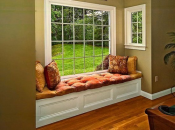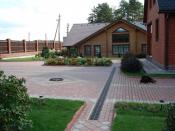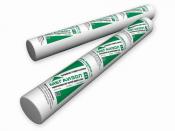Search
Login
We build a pond on the site with our own hands, a summer cottage, what it should be
There are two main reasons that make you want to build a decorative pond in the garden. The first is the realization of a long-ripened plan and the fulfillment of your desire, the second is the need associated with the characteristics of a particular area (marshy and damp piece of land). In any case, there is a need to do drainage.
Content:
- We solve the problem of waterlogging by creating a pond in the garden with our own hands video
- In what place and how to make a pond in the garden
- Swarm pit under a pond
- DIY pond on site video
- Clay pond
- Organization of a fountain or waterfall video
We solve the problem of waterlogging by creating a pond in the garden with our own hands

A pond in the garden is dug up in the lowest place - this helps to solve the problem of waterlogging. It can be planted with plants that love moisture - this will decorate your garden decor. Thanks to the pond, the plot will become drier. Decorative pond can have a different shape. For example - a stream, with shores planted with flowers and a small forged bridge.
Consider another option. For example, if the subsoil waters are far from the surface. With this option, waterproofing is necessary, note that this process does not belong to very complex ones. You can, of course, use other options for constructing a pond with waterproofing, but they are more expensive and complicated to perform, in addition, there may be problems with the procurement of materials. Options with greasy clay and using a plastic film will not create any problems.
In what place and how to make a pond in the garden

First of all, for the construction of a pond in the garden with your own hands, you need to choose a place. A well-lit place and the absence of bushes and trees nearby (their roots can cause irreparable harm to the bottom of the reservoir) will be correct. Shrubs and trees will clog the pond with leaves and branches.
It will be most convenient to find a pond near the house, which will provide unhindered access to electricity.
Swarm pit under a pond

Decide what material you will make the base from - film or finished. Think about what functions your pond will perform, whether colorful fish will swim in it, whether various aquatic plants will be in it. After that, find out how deep your pond will be. If you settled on the presence of fish in your pond - the depth should be about 60-70 cm. It makes sense to consult in advance about aquatic plants for the pond. Pay attention to the shape of the walls of the pit if you make it with a base of film.
Clay soils and chernozems make it possible to construct vertical walls of the pit, while sandy soils make sloping. You will have to know and take into account exactly what depths are needed for certain plants of the reservoir. This is not an unimportant fact. In order that it would be nice and interesting to plant moisture in your pond with plants, build so-called not very large steps, with a depression of 10-15 cm.
DIY pond on site
Attention should be paid to the bottom, how smooth and soft it is (whether there are plant roots or stones). If there is, sand litter 5-10 cm thick will be needed. The next step is to lay polyethylene.

After the above steps, the film should be pressed down with smooth and large stones in the main places. Then you can start filling the pond with water. Along the perimeter of the reservoir, it is necessary to dig a groove. This is done to level the stones laid on the edges of the polyethylene with the ground level. When pouring water - straighten the polyethylene. Remember, it’s better to have a couple of large folds on the walls of the pit than many small ones. Stones located around the perimeter, if necessary and desired, can be connected to each other using concrete.
A polyvinyl chloride film is most suitable for rigging the bottom of a pond on a site. Its service life is about 20 years. A pond with ordinary plastic wrap will last about 5 years. Which one to choose? The solution to this issue is yours.
Clay pond
Clay bottom bottom rigging is the cheapest way, albeit requiring experience and effort. But this option will give you the opportunity to build a pond where water will not be held on its own. The laid layer of oily clay must be tamped with a so-called mallet made of wood. When tamping, there is a risk of damage to the roots of closely growing trees. The part of the side of the pond that is open to the sun and air must be moist. This must be closely monitored. Clay that has dried can crack.

Well-growing plants near the shores of the pond can perforate the protective layer with their roots. If this happens, you will have to get them and repair the reservoir. The same procedure will have to be done if you dig or divide overgrown units of deciduous plants. Pay attention to the quantity and quality of clay used to equip the bottom of the pond. These factors greatly affect the duration of the maintenance-free operation of a reservoir. The layer thickness is required at least 15 cm. In this regard, the pit for the reservoir should be made deeper by 15 cm than the one you want to see after the completion of construction work. The amount of clay used must be poured out at least one third more. She, after tamping with a pusher, will sit well.
Organization of a fountain or waterfall
Your pond can be endowed with a distinctive feature. For example, to arrange in it a small fountain or a waterfall. For their organization will need a special pump for the pond. Buy it at a pet store. Also, to clean the water in your pond, a filter is useful. You can buy it in the store ready-made.





